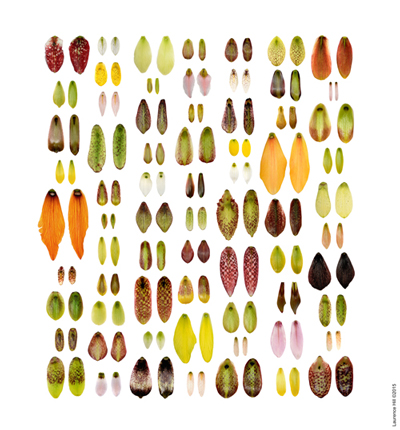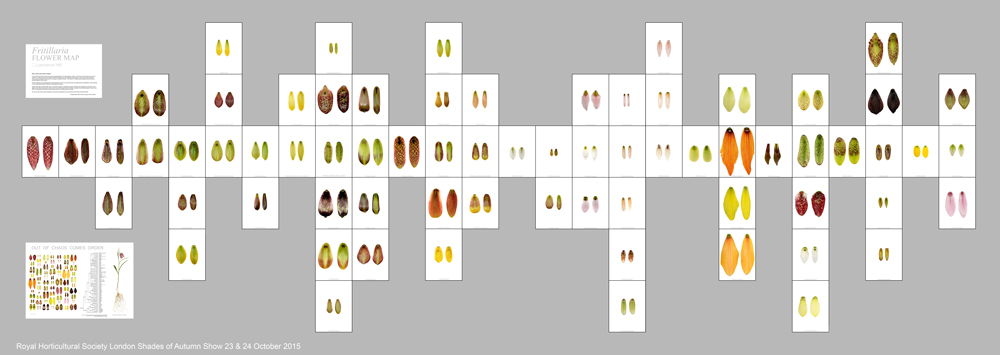NEWS 2015
Fritillaria Flower Map
Royal Horticultural Society
Shades of Autumn London Show
London
United Kingdom
23-24 October 2015
Photographic Exhibit
Why do plant names keep changing?
Until recently plants that looked similar were grouped together in the same genus or family. On the face of it this seems like common sense but in reality there are many different evolutionary pathways. When different species grow in environments that are alike or occupy similar ecological niches they can undergo convergent evolution. This results in unrelated plants appearing alike and being grouped together taxonomically.
Genetic research has questioned these visual deceptions and in turn taxonomists have reconsidered their classifications, often resulting in new relationships based on different morphological characters.
Tepal morphology has traditionally been an important character in classifying the genus Fritillaria. By arranging just the tepals in their genetic order, with clusters shown vertically and more distant relationships horizontally, the pattern that emerges appears in part to lack order. This highlights the difficulty faced by taxonomists in unravelling nature’s secrets.
So why do plant names keep changing? An improved understanding of the past helps build a better-informed present.
“Chaos is merely order waiting to be deciphered”― José Saramago
COMMENTARY
The Fritillaria Flower Map draws on genetic evidence to shows evolutionary change in tepal morphology. This demonstrates how visual differences can be only skin deep. Also the reference to ‘Out of Chaos Comes Order’ plays with the aesthetic order shown in the key and Nature’s order, which does not on first encounter appear to have order. Both art and science in their own way strived to create order from chaos.




